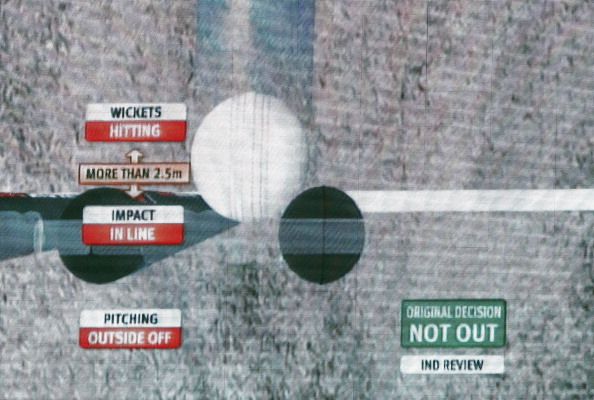
Technology in cricket : How much is too much?
Technology is becoming an inseparable part in most of the sports, and cricket is no exception. In a game where a batsman can be dismissed in a dozen different ways, why not? There are two standing umpires to make sure the laws of the game are followed; to make sure all 42 rules are upheld when the ball is bowled at 100 miles an hour is no child’s play. Umpires are humans, and their decisions are prone to human errors. That’s where technology comes in. The purpose of introducing technology was to help the umpires come up with better and quicker decisions. To what extent are they successful is a question that doesn’t have a simple answer.
Anyone who saw the 2007-08 Sydney Test between Australia and India will acknowledge the need for technology. Why should we let a few poor decisions by two men affect the outcome of an exciting context? Other ball games like football and tennis are hesitant to bring in too much of technology since it would break the momentum of the game. But, in a game where almost nothing happens between a bowler starting his walk back after the delivery and up until he runs in to bowl again, ‘breaking the flow’ is not much of a concern. Technologies like DRS, Hot Spot, Hawk-Eye and Snickometer have been offering valuable data to the umpires that were previously unreachable. But are they making cricket a better game? To know this, we have to answer two questions: Are they more efficient than humans? And, even if they are, are we willing to make that sacrifice?

More efficient than humans?
The answer to the first question is pretty straight forward: Yes. Technology is definitely more efficient. How much more? We still don’t know. But we sure know that none of these are error free. The recent Ashes tour amassed more questions about the credibility of the UDRS. The disturbing rumours about English batsmen using silicone tapes to dodge Hot Spot has raised more serious concerns than just that technology. The creators of Hawk-Eye have admitted to the ‘tracking error’ that their system caused after the Phil Hughes LBW incident. Despite all these, the very fact that the accuracy in decisions has shot up from 90 to 95% in Tests after the introduction of DRS is commendable. No technology can ever be perfect, but even a minute improvement it brings into decision-making is worth going for. The goal-line technology was subjected to rigorous testing by the FIFA for two years. Perhaps, cricket should take a leaf out of football and put its technology through more tests in lower tiers of the game before enforcing it at the international stage.
Is the sacrifice worth it?
Coming to the second and more fundamental question: Are we willing to give up the ‘human element’? Imagine a cricketing utopia where technology is completely flawless; where there are no umpires, and every decision is displayed on the screen in a fraction of second. A place where ‘howzat!’ is just an obsolete phrase. Stuart Broad wouldn’t have a chance to stay at the crease after he nicks, and Michael Clarke can’t claim a catch that he dropped. Even though the game will be fair and just, will it be the same?
To err is to human, and that’s what makes the game even more beautiful. Sachin Tendulkar is the legend he is today, not just for those 143 runs he scored in the ‘desert storm’ innings but for what followed after that. Tendulkar decided to walk when the umpire thought he was not out, even though his presence could have won the match for India. More often than not, the small errors by umpires have brought in a new dimension to the game that would have otherwise gone unnoticed.
Consider Brian Lara, Tendulkar, Ricky Ponting and Jacques Kallis, some of the best cricketers of this era (arguably, the top 4). While Lara and Tendulkar walked as soon as they knew they nicked the ball, Ponting had no trouble staying at the crease after getting the thickest of the edges as long as the umpire did not raise his finger. When a catch was ambiguous, the word of the fielder was enough for Kallis to walk back to the pavilion. These subtle things brought in by the uncertainty and the human element are the only things that enables us to draw a thin line of separation among these legends.
All in all, even though technology improves the accuracy of decisions, the ICC should take measures to ensure that it is not taking the good things away from the game. In a game where players bank on their opponents to make mistakes, is it so hard to forgive a couple of mistakes committed by the umpires? If we continue to give in to technology in this batsman-centric sport, it wouldn’t be long before someone suggests replacing bowlers with bowling machines, to improve line and length and save time.